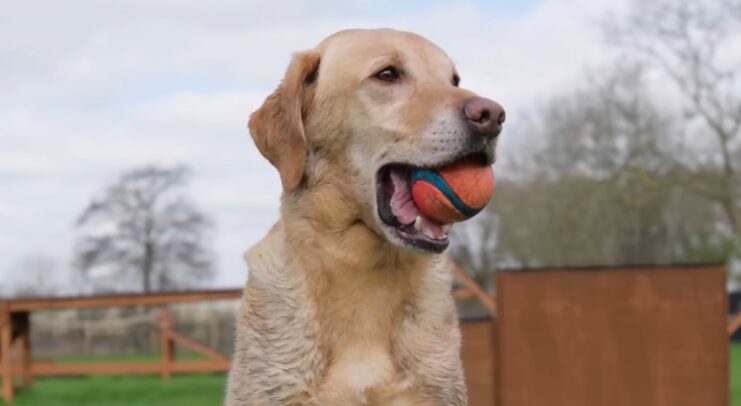Being a first-time dog owner can be an exciting but challenging experience. I knew this firsthand when I brought home my first furry friend. To ensure a smooth transition into dog ownership, it’s important to avoid common mistakes. Here are some essential dog training tips for first-time owners to help them navigate the challenges and ensure a happy and well-behaved canine companion.
Key Takeaways:
- Start training early to establish good habits.
- Be consistent with your training methods and commands.
- Use positive reinforcement to reward desired behavior.
- Seek professional help or attend training classes if needed.
- Patience and persistence are key in dog training.
Considerations Before Getting a Dog
Before getting a dog, there are several important considerations for first-time owners. It’s crucial to evaluate your time availability, lifestyle suitability, living space, and cost, and determine the right type of dog for your needs. Taking these factors into account will help ensure that you are fully prepared and ready to take on the responsibility of dog ownership.
Time availability is a significant consideration when getting a dog. Dogs require exercise, training, and attention daily. If you have a busy schedule or work long hours, you may need to consider whether you have enough time to dedicate to a dog’s needs.
Your lifestyle also plays a role in dog ownership. Some dogs require more exercise and mental stimulation than others. If you lead an active lifestyle and enjoy outdoor activities, a high-energy breed may be a good fit for you. On the other hand, if you prefer a more laid-back lifestyle, a low-energy breed may be more suitable.
The size of your living space is another factor to consider. Some breeds require more space to roam and play, while others are more adaptable to smaller living environments. It’s important to ensure that your living space can accommodate a dog comfortably.
Cost is also an important consideration. Owning a dog comes with various expenses, including food, veterinary care, grooming, training, and supplies. It’s crucial to budget for these expenses to ensure that you can provide the necessary care for your dog. It is advisable to talk to the trainers, so check here for training costs.
Lastly, determining the right type of dog for your needs is essential. Different breeds have different temperaments, exercise requirements, and characteristics. Researching and understanding different breeds will help you choose a dog that aligns with your lifestyle and preferences.
Potty Training Tips for New Dogs
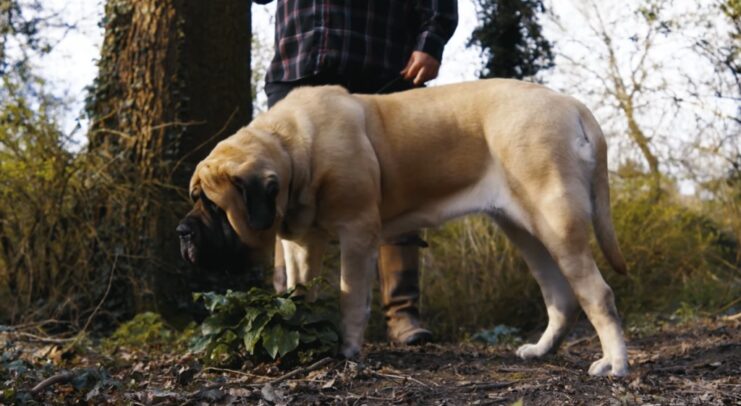
Potty training is an essential aspect of caring for a new puppy or dog. By establishing a consistent routine and using positive reinforcement, you can teach your furry friend where and when to do their business. Here are some effective potty-training tips to help you and your new companion on the path to success.
Establish a Designated Bathroom Area
To avoid confusion, it’s important to establish a designated bathroom area for your dog. Choose a specific spot in your yard or create a designated indoor area with puppy pads or a litter box for small dogs. By consistently bringing your dog to this area, they will learn to associate it with bathroom breaks.
Set a Potty Schedule
Having a consistent potty schedule is essential for successful house training. Take your dog outside or to their designated bathroom area at regular intervals throughout the day, such as after meals, naps, and playtime. This routine will help your dog learn when and where to go potty.
Use Positive Reinforcement
Positive reinforcement is a powerful tool for potty training. Whenever your dog successfully goes potty in the designated area, be sure to praise and reward them with treats or verbal praise. This positive reinforcement will help reinforce the behavior and motivate your dog to continue using the right spot.
Consider Crate Training
Crate training can be a helpful tool for potty training, especially for young puppies. Dogs have the instinct to keep their sleeping area clean, so by confining them to a crate when you are unable to supervise, you can prevent accidents in the house. Just be sure to let your dog out for regular potty breaks and never use the crate as a form of punishment.
With patience, consistency, and positive reinforcement, potty training your new dog can be a rewarding experience. Remember to stay calm and reward good behavior, and soon enough, your furry friend will become a pro at using their designated bathroom area.
Early Socialization for Puppies and New Dogs
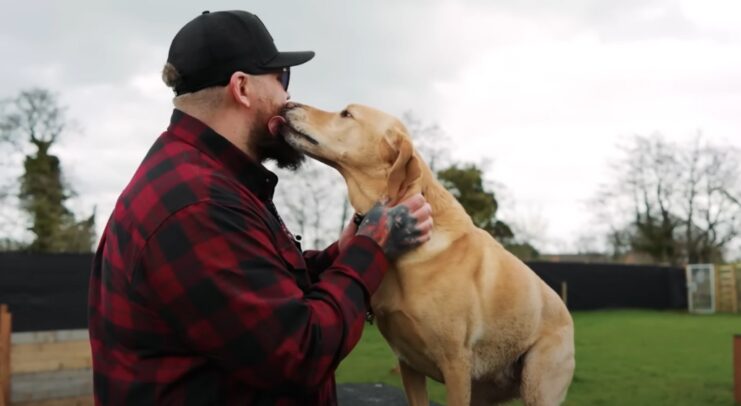
When it comes to raising a well-behaved companion, early socialization plays a crucial role in shaping a dog’s behavior and temperament. The first three months of a puppy’s life are particularly critical for exposing them to various sights, sounds, places, people, and experiences. By gradually introducing them to new positive experiences, we can help prevent anxiety, fear, and aggressive behaviors later in life.
The Benefits of Early Socialization
- Builds confidence: Socializing puppies at a young age helps them develop confidence and a positive outlook on the world.
- Reduces fear and anxiety: Exposing puppies to different environments and situations early on helps them become desensitized and less likely to develop fear or anxiety-related issues.
- Promotes better behavior: Socialized puppies are more likely to be well-behaved and obedient, as they have learned how to interact positively with humans, other animals, and their surroundings.
- Improves adaptability: Dogs that have been properly socialized are better equipped to handle new situations, such as traveling or being introduced to new environments.
How to Socialize Your New Puppy
Here are some tips to help you socialize your new puppy:
- Start early: Begin socializing with your puppy as soon as you bring them home. The critical socialization period begins at around 3 weeks and continues until around 16 weeks of age.
- Expose them to various environments: Take your puppy to different locations, such as parks, pet-friendly stores, and busy streets, to expose them to different sights, sounds, and smells.
- Introduce them to new people and animals: Gradually introduce your puppy to different people, including children and individuals wearing different types of clothing. Arrange playdates with other well-behaved dogs to help them learn proper social skills.
- Use positive reinforcement: Reward your puppy with treats, praise, and affection when they exhibit calm and friendly behavior during socialization experiences. This will help them associate new experiences with positive outcomes.
- Enroll in puppy classes: Puppy training classes can provide a structured environment for socialization and learning basic obedience skills. These classes also offer an opportunity for your puppy to interact with other dogs and people under the guidance of a professional trainer.
| Benefits of Early Socialization | How to Socialize Your Puppy |
|---|---|
| Builds confidence | Start early |
| Reduces fear and anxiety | Expose them to various environments |
| Promotes better behavior | Introduce them to new people and animals |
| Improves adaptability | Use positive reinforcement |
| Enroll in puppy classes |
Basic Dog Training for All Dogs
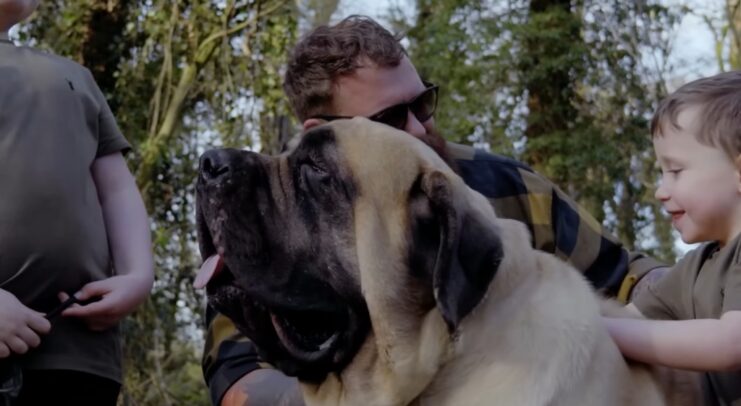
When it comes to dog training, whether you have a new puppy or an older dog, basic training is essential for their well-being and your peace of mind. Basic dog training includes socialization exercises and leash training, which help establish a routine and reward good behavior. By investing time and effort into these training techniques, you can ensure that your dog becomes a well-mannered and obedient companion.
The Importance of Socialization Exercises
Socialization is a crucial aspect of dog training, as it helps your dog feel comfortable and confident in various situations and environments. Socialization exercises involve exposing your dog to different people, animals, sights, and sounds. This exposure should be gradual and positive, allowing your dog to experience new things in a controlled and safe manner. By providing positive associations with these experiences, you can prevent anxiety, fear, and aggressive behaviors in your dog later in life.
Leash Training for Control and Safety
Leash training is another essential aspect of basic dog training. Teaching your dog to walk politely on a leash not only ensures their safety but also enhances your control over their behavior. Start by introducing your dog to the leash and collar, making sure they are comfortable wearing them. Then, use positive reinforcement techniques to teach them to walk calmly by your side, without pulling or lunging. Consistency and patience are key when leash training, so be sure to reward your dog for good behavior and provide clear cues to guide them.
By incorporating these basic dog training techniques into your routine, you can establish a strong foundation for a well-behaved and happy dog. Remember that training takes time and consistency, so be patient with your furry companions as they learn and grow. With dedication and positive reinforcement, you can create a harmonious relationship with your dog based on trust and mutual understanding.
Table: Socialization Exercises and Leash Training
| Training Technique | Description |
| Socialization Exercises | Expose your dog to different people, animals, sights, and sounds gradually and positively. |
| Leash Training | Teach your dog to walk politely on a leash, without pulling or lunging, using positive reinforcement techniques. |
Maintaining a Healthy Weight through Diet and Exercise

When it comes to our furry friends, maintaining a healthy weight is just as important as it is for us humans. A balanced diet and regular exercise play a crucial role in keeping our dogs fit and happy. Let’s explore some key tips for ensuring your dog maintains a healthy weight.
-
Provide a Balanced Diet
Feeding your dog, a well-balanced diet is essential for maintaining their weight. Opt for high-quality dog food that contains the necessary nutrients they need. Avoid overfeeding and be mindful of portion control. If you’re unsure about the appropriate amount of food to feed your dog, consult with your veterinarian for guidance.
-
Avoid Excessive Treats
Treats are a great way to reward your furry friend, but they should be given in moderation. Excessive treat consumption can contribute to weight gain. Instead, opt for healthy treats or use alternative rewards like praise or playtime to reinforce positive behavior.
-
Regular Exercise Routine
Regular exercise is essential for maintaining a healthy weight in dogs. Daily walks, playtime, and interactive toys that encourage physical activity are all great ways to keep your dog moving. The type and amount of exercise needed may vary depending on your dog’s breed, age, and overall health. Consult with your veterinarian to determine an appropriate exercise routine for your furry companion.
-
Monitor Weight and Adjust as Needed
Regularly monitor your dog’s weight to ensure they are within a healthy range. If you notice any significant changes, such as sudden weight loss or gain, consult with your veterinarian. They can guide you in adjusting your dog’s diet and exercise routine accordingly.
-
Seek Veterinarian Guidance
If you are unsure about your dog’s weight or need further guidance on maintaining a healthy weight, consult with your veterinarian. They can provide personalized recommendations based on your dog’s specific needs and help you create a tailored plan for their diet and exercise regimen.
| Benefits of Maintaining a Healthy Weight |
| 1. Improved overall health and increased longevity |
| 2. Reduced risk of obesity-related health issues, such as diabetes, joint problems, and heart disease |
| 3. Enhanced mobility and energy levels |
| 4. Better quality of life for your furry companion |
| 5. Prevention of weight-related discomfort and pain |
Maintaining a healthy weight for your dog is crucial for their overall well-being. By providing a balanced diet, monitoring treat consumption, implementing a regular exercise routine, and seeking guidance from your veterinarian, you can help your furry friend live a long, happy, and healthy life.
Conclusion
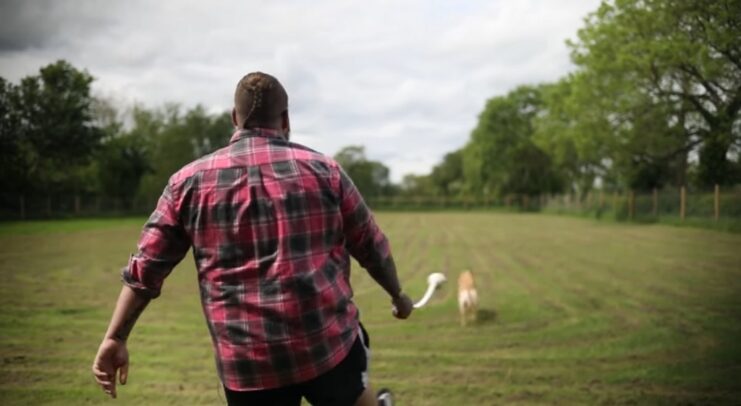
As a first-time dog owner, training your new canine companion can sometimes feel overwhelming, but by following these essential dog training tips, you can set yourself up for success. Remember to consider important factors before getting a dog, such as your time availability, lifestyle suitability, and living space. By taking these into account, you can ensure that you are fully prepared for the responsibilities of dog ownership.
Potty training is a crucial aspect of dog training, especially for new puppies. Having a plan in place and using positive reinforcement techniques will help your dog learn good bathroom habits. Additionally, early socialization is key to raising a well-behaved and confident dog. By exposing them to various experiences and positive interactions, you can prevent future behavior issues.
Basic dog training, regardless of breed or age, is important for all dogs. Establishing a routine, teaching basic commands, and investing in training will help you have a well-mannered and obedient companion. Lastly, maintaining a healthy weight through a balanced diet and regular exercise is essential for your dog’s overall well-being and longevity.
By incorporating these dog training tips, first-time owners can create a strong bond with their furry friends and enjoy a harmonious relationship. Remember that consistency, patience, and positive reinforcement are key to successful training. Embrace the journey of dog ownership and cherish the moments you spend with your four-legged companion.
FAQ
What should I consider before getting a dog?
Before getting a dog, it’s important to evaluate your time availability, lifestyle suitability, living space, and cost, and determine the right type of dog for your needs.
How can I potty train my new dog?
To potty train your new dog, establish a designated bathroom area, provide regular potty breaks, and use positive reinforcement for good behavior. Crate training can also be helpful for house training.
Why is early socialization important for puppies and new dogs?
Early socialization is crucial to ensure that puppies and new dogs become well-behaved and confident companions. It involves exposing them to various sights, sounds, places, people, and experiences.
What does basic dog training include?
Basic dog training includes socialization exercises and leash training to establish a routine and reward good behavior. Teaching basic commands like “sit,” “stay,” and “come” is also important for a well-mannered and obedient dog.
How can I maintain a healthy weight for my dog?
To maintain a healthy weight for your dog, provide a balanced diet with high-quality ingredients, avoid excessive treats, and ensure regular exercise. Consult with your veterinarian if your dog needs to lose weight and follow their recommendations.
What can first-time dog owners do to ensure a successful training experience?
First-time dog owners can ensure a successful training experience by considering important factors before getting a dog, implementing effective training methods, and maintaining a healthy lifestyle for their canine companions.

